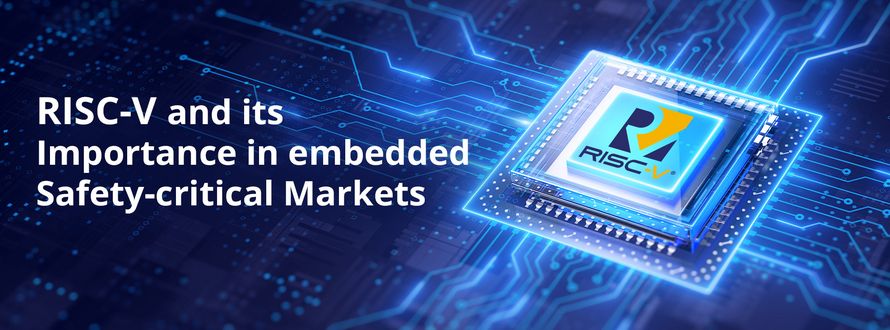A Revolution in the Making
In a world dominated by proprietary CPU architectures like x86 and ARM, a new contender has been quietly but strongly transforming the processor landscape: RISC-V. Pronounced “risk-five,” this open-standard Instruction Set Architecture (ISA) is turning heads in both mainstream and embedded markets, shaking up industries from IoT to aerospace.
But what makes RISC-V different? Why are leading developers, hardware designers, and even governments rallying around this architecture? And how are companies like SYSGO, a leader in safety- and security-critical systems, enabling real-world adoption?
Let’s dive deeper into RISC-V’s background, its unique value, challenges, key applications, and why its momentum is not just hype—but a shift in how we design tomorrow’s trusted computing platforms.
What is RISC-V?
RISC-V is an open, free-to-use ISA based on the Reduced Instruction Set Computer (RISC) principles. Unlike proprietary ISAs that require licensing (think ARM or x86), RISC-V is open-source, modular, and designed for extensibility. It was born at the University of California, Berkeley, in 2010, and has since evolved into a global movement supported by the RISC-V International consortium, with hundreds of members spanning startups, academia, and Fortune 500 companies. RISC-V isn’t just an ISA: It’s a paradigm shift. Open, flexible, and designed for the future.
The Value Proposition
- Freedom to Innovate: Because RISC-V is open, developers and hardware designers are free to customize their cores without paying royalties. This leads to faster innovation and reduced time-to-market.
- Modularity: Need a minimal footprint for your IoT device? Or a high-performance compute cluster with vector extensions? RISC-V's modularity lets you add only what you need—no more, no less.
- Security and Safety: In an age where trust in hardware is critical (like in autonomous vehicles, medical devices, or national defense), RISC-V offers transparency. You can inspect and verify every layer—ideal for systems requiring certification or formal verification.
Challenges in Adoption
Like all transformative technologies, RISC-V faces hurdles:
- Toolchain Maturity: While improving rapidly, RISC-V’s compiler/debugger ecosystems still lag behind ARM's polished toolsets.
- Fragmentation Risk: Its openness invites customization, but this can lead to interoperability issues.
- Ecosystem Depth: Peripheral drivers, middleware, and RTOS support are still catching up.
Solutions and Acceleration
The RISC-V community is fast-moving, and these challenges are being actively addressed:
- RISC-V International maintains architectural stability and standardization to reduce fragmentation.
- Major vendors like SiFive, Gailser, OpenHWGroup, CV6, Andes Technology, and Microchip offer commercial-grade cores and SoCs.
- Toolchain support from GCC, LLVM, and QEMU has grown significantly.
- Companies like SYSGO are bringing certifiable safety and security support into the RISC-V ecosystem.
RISC-V in the Embedded World
Embedded systems are where RISC-V shines brightest.
- Automotive: RISC-V is already being explored in Advanced Driver-Assistance Systems (ADAS) and vehicle control units, especially when paired with ASIL-D certification from ISO 26262. Its openness makes it easier to analyze for functional safety.
- Aerospace and Avionics: In mission-critical environments, determinism, verifiability, and fault tolerance are essential. RISC-V’s simplicity makes it suitable for formally verified designs, reducing certification costs and complexity.
- Defense and Secure Communications: RISC-V’s transparent architecture enables hardware root-of-trust and anti-tamper techniques—more difficult to realize and more expensive in black-box ISAs.
- Medical Devices: Safety and traceability are paramount. RISC-V’s openness gives device makers control and insight down to the silicon.
Driving Safety and Security for RISC-V
SYSGO, the European operating system vendor of the well-known PikeOS, a real-time operating system with built-in hypervisor capabilities, is playing a crucial role in bringing certified software infrastructure to RISC-V platforms.
Why it matters:
- PikeOS supports mixed-criticality applications, running Linux and other guest OSs, RTEs and APIs alongside safety-critical RTOS partitions.
- SYSGO is actively porting PikeOS to RISC-V, enabling high-assurance systems across industries like railway, automotive, and aerospace.
- SYSGO’s tooling and certification expertise (such as IEC 61508, ISO 26262, DO-178C) accelerate time-to-certification for RISC-V platforms.
With their deep focus on security-by-design and certifiability, SYSGO helps unlock the full potential of RISC-V for the most demanding applications.
Key Use Cases
- Microchip PolarFire SoC: A RISC-V based FPGA with support for Linux + RTOS.
- SiFive Performance Cores: Used in AI accelerators, edge computing, and even consumer devices.
- European Processor Initiative (EPI): RISC-V is at the heart of Europe’s push for digital sovereignty.
Final Thoughts: Why RISC-V matters
We’re entering an era where openness, control, and trust in hardware matter more than raw performance alone. RISC-V is answering that call—with an architecture that's not just technically elegant, but politically and economically strategic.
For developers, architects, and system integrators working on certifiable, safety-critical platforms, RISC-V combined with tools like SYSGO’s PikeOS offers an unprecedented level of freedom and control.
It’s not a question of if RISC-V will dominate segments of the market—it’s how soon and how deep its impact will go.
Ready to build the next generation of secure embedded systems? Start with RISC-V and look to SYSGO to get you there faster—and safer.

